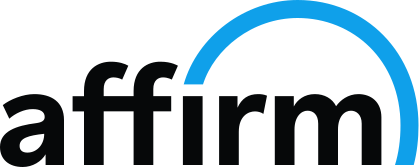 Tired of sending out countless applications with little response? Your resume may be falling through the cracks of Applicant Tracking Systems (ATS). ATS resume optimization can make the difference between being noticed and getting overlooked. With the right techniques, you can ensure your resume passes ATS screening, reaching the recruiter’s desk.
Tired of sending out countless applications with little response? Your resume may be falling through the cracks of Applicant Tracking Systems (ATS). ATS resume optimization can make the difference between being noticed and getting overlooked. With the right techniques, you can ensure your resume passes ATS screening, reaching the recruiter’s desk.
Applicant Tracking Systems (ATS) are used by companies of all sizes to efficiently handle job applications. Over 90% of Fortune 500 companies rely on ATS, and an increasing number of mid-sized organizations are adopting ATS to streamline the hiring process. This makes ATS resume optimization essential across industries. When you know how to structure your resume effectively, it greatly improves your chances of standing out in a competitive job market.
Understanding ATS and Its Importance
Most companies today, especially large organizations, rely on ATS to filter resumes before they reach a hiring manager. In fact, over 75% of recruiters use ATS, with more than 90% of Fortune 500 companies implementing this technology. ATS resume optimization involves structuring your resume to align with specific job requirements by using keyphrases that match the job description. Resumes that lack these keywords are often dismissed by ATS software before any recruiter views them.
ATS tools work by reading and analyzing resumes, often scoring or ranking them based on the keywords and qualifications that match the job description. Higher-ranking resumes are more likely to be reviewed by human recruiters, making ATS resume optimization a vital step in landing interviews. As more companies adopt this technology, job seekers at all levels should consider ATS best practices.
How to Discover the Right Keywords
Effective ATS resume optimization starts with discovering the right keywords. Job descriptions typically outline the skills and qualifications employers prioritize. For an IT role, keywords like “coding,” “cloud computing,” or specific tools such as “Python” are critical. Other ways to identify ATS-friendly keywords include browsing job sites like Indeed, networking with colleagues in your field, and using keyword scanners such as Jobscan.
Online tools can be especially helpful in this process. For instance, Jobscan compares your resume to a specific job description, analyzing it for high-value keywords and showing you where your resume may lack key terms. Additionally, consider analyzing multiple job postings for the same role; this can help you spot recurring skills or attributes that are often critical to ATS compatibility. In marketing, for example, terms like “SEO,” “content strategy,” or “brand development” are common.
Best Practices for Incorporating ATS Keywords
Match Your Resume to the Job Description: A core component of ATS resume optimization is mirroring the language found in job postings. If a role lists “leadership experience,” ensure you include a relevant example such as, “Led a team of 15 employees, increasing productivity by 20%.”
For enhanced ATS resume optimization, try “skills-matching,” where you look at several job postings for your target role and identify the most frequently mentioned skills. Then, incorporate these skills into your achievements with specific, measurable examples, such as “Implemented project management processes that reduced turnaround time by 30%.”
Use the Right Format
ATS tools can be strict with formatting, so part of effective ATS resume optimization is using a simple format. Avoid images, tables, and complex designs that can disrupt ATS processing. Stick to standard headings, like “Work Experience” and “Skills,” to guide the system.
Use a checklist of ATS-friendly formats: avoid headers and footers, use standard fonts like Arial or Times New Roman, and avoid complex bullet styles, which may confuse ATS. Generally, Word documents are more ATS-friendly than PDFs, so consider submitting your resume in this format unless otherwise specified.
Include Both Hard and Soft Skills
In ATS resume optimization, it’s important to balance hard and soft skills. Hard skills like “network security” are essential, but soft skills like “teamwork” and “communication” also add value and help your resume get flagged by ATS.
For example, adaptability is a crucial soft skill for project management and client-facing roles, where handling change is key. Research suggests recruiters are increasingly interested in these skills as they provide balance for technically strong candidates. Highlight a blend of skills to show you are a well-rounded applicant.
Don’t Over-stuff Keywords
One common mistake in ATS resume optimization is keyword stuffing, which can hinder readability. Aim to place terms naturally within work experience descriptions. For example, instead of listing “coding, programming, Python, Java,” use phrases like “Developed Python applications, collaborating on Java-based solutions.”
Keyword stuffing can make your resume seem robotic, which can be off-putting to recruiters. Instead, spread keywords across your experience, skills, and summary sections, ensuring each phrase aligns with a genuine achievement or responsibility.
Customize for Each Job
Tailoring your resume for each job application is essential to effective ATS resume optimization. Highlighting job-specific skills and qualifications directly mentioned in the job posting increases your resume’s chances of being flagged by the ATS.
A helpful method is to maintain a “master resume” with all of your achievements, skills, and experiences. This way, you can pick the most relevant parts for each application without starting from scratch every time. Tailoring resumes may seem time-consuming, but it greatly enhances your chances of making it past ATS filters and into the hands of recruiters.
When applied properly, ATS resume optimization can significantly improve your chances of landing an interview. With over 62% of resumes passing through ATS before reaching human eyes, job seekers who tailor their resumes to include job-specific keywords are significantly more likely to receive a callback than those who use generic terms.
Need more help optimizing your resume? Consider a professional resume writing service to help tailor your documents to fit the current industry standards and improve your chances for an interview.












